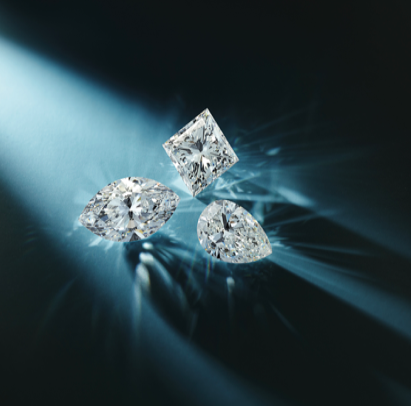

When it comes to diamonds, the word “real” often conjures images of rare, sparkling gems extracted from deep within the Earth. However, a new player has entered the world of diamonds, one that challenges traditional notions of authenticity – the lab-grown diamond. Are these diamonds, grown in a controlled environment, truly “real” diamonds? Let’s delve into the science, history, and industry perspectives to uncover the answer.
The Science Behind Lab-Grown Diamonds
Lab-grown diamonds, also known as synthetic or cultured diamonds, are created through a fascinating process that replicates the conditions under which natural diamonds form. Both natural and lab-grown diamonds are composed of carbon atoms arranged in a crystal lattice structure, making them nearly identical at the molecular level.
The most common method for creating lab-grown diamonds is Chemical Vapor Deposition (CVD) and High-Pressure High-Temperature (HPHT) processes. In the CVD method, a diamond seed crystal is exposed to a carbon-rich gas, causing carbon atoms to adhere to the seed and gradually build up the diamond’s structure. HPHT, on the other hand, mimics the high-pressure and high-temperature conditions found deep within the Earth’s mantle to crystallize carbon into diamond.
From a scientific standpoint, lab-grown diamonds possess the same physical and chemical properties as natural diamonds. They exhibit the same brilliance, fire, and hardness that have made diamonds famous for centuries. In essence, they are real diamonds, albeit created in a different setting.
The Historical Context
To understand the authenticity of lab-grown diamonds, it’s essential to examine the history of diamond mining and the evolution of gemstone production. Natural diamonds have been revered for their beauty and rarity for thousands of years. They were first discovered in India, where they were used as religious icons and symbols of wealth.
However, it wasn’t until the 19th century that diamond mining began in earnest, with significant discoveries in Africa and South America. These finds led to the establishment of the modern diamond industry, with companies like De Beers becoming synonymous with natural diamonds.
The rise of lab-grown diamonds in the late 20th century disrupted this status quo. Technological advancements made it possible to create diamonds in a laboratory setting, challenging the notion that natural diamonds were the only “real” ones. This shift in the diamond industry sparked debates about authenticity and raised questions about the value and ethics of both natural and lab-grown diamonds.


Industry Perspectives
The diamond industry has had mixed reactions to the emergence of lab-grown diamonds. Some traditionalists argue that only diamonds formed in the Earth’s mantle should be considered “real.” They view lab-grown diamonds as imitations or alternatives, rather than genuine counterparts. However, this perspective fails to acknowledge the scientific fact that lab-grown diamonds are chemically and physically identical to their natural counterparts.
On the other hand, many in the industry, including major diamond producers and retailers, have embraced lab-grown diamonds. They recognize the potential benefits of sustainability, ethical production, and cost-effectiveness that synthetic diamonds offer. These industry players market lab-grown diamonds as a more responsible and accessible option for consumers.
Ethical and Environmental Considerations
One of the significant advantages of lab-grown diamonds is their ethical and environmental footprint. Natural diamond mining has historically been associated with environmental degradation, human rights abuses, and conflicts, famously known as “blood diamonds” or “conflict diamonds.” In contrast, lab-grown diamonds are produced with minimal environmental impact and without the ethical concerns associated with mining.
Furthermore, the controlled environment of diamond labs ensures fair labor practices and transparency throughout the production process. Consumers concerned about the origin of their diamonds often find lab-grown diamonds to be a more ethical choice.


Pricing and Accessibility
Another aspect to consider is the pricing and accessibility of lab-grown diamonds. Natural diamonds are subject to the laws of supply and demand, which can lead to price volatility. The rarity of large, high-quality natural diamonds drives up their cost, making them unattainable for many.
Lab-grown diamonds, however, offer a more stable pricing structure. Their production can be scaled up to meet demand, reducing price fluctuations. This accessibility makes lab-grown diamonds an attractive option for consumers looking for the beauty and durability of diamonds without the hefty price tag.
In conclusion, the question of whether a lab-grown diamond is a real diamond is a matter of semantics and perspective. From a scientific standpoint, lab-grown diamonds are indisputably real diamonds, possessing the same chemical and physical properties as their natural counterparts. However, the historical context, industry perspectives, and consumer preferences have shaped a narrative that distinguishes between natural and lab-grown diamonds.
Ultimately, the authenticity of a diamond is not solely defined by its origin but by the emotions and sentiments it represents to its owner. Whether you choose a natural or lab-grown diamond, both options offer beauty, durability, and a unique connection to the timeless allure of these precious gems. The choice between the two depends on your values, priorities, and what you consider a “real” diamond.




